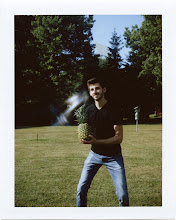I have a couple rolls of 220, a couple rolls of 120, and now a roll or 35mm film to scan. And all this on the eve of my trip to New York City for a Film Photography Meetup (organized by members of the Film Photography Podcast). I'm going to be shooting and shooting and shooting film like it is going out of style. I think the most difficult decision I have to make regarding the trip is which film to bring and what order to shoot it in. I'm bringing the Konica Auto S2 and the Mamiya RZ67 (with the 120 and 6x6 backs). I'm looking forward to meeting some other people who really enjoy film. And I can't wait to see Mat Marrash's 8x10 camera in action.
See you after the weekend.
14 April 2011
13 April 2011
Love it or Leave it
Now this may just be a spur of the moment complaint, but what is going on with all this HDR photography lately? If you don't know what HDR is, then you may want to pop it into your favorite search engine and look it up (if you prefer your photography untainted, try not to look at any example images). Every photographer wants a full range of values in his/her image, but these guys are just pushing it way too far.
I want to make it clear, at this point, that I'm not talking about every single photographer who is creating digital HDR images. I have seen more than a handful that work extremely well and make me tip my hat. But, unfortunately, it seems that these are the exception.
The majority of photographers doing digital HDR just push and push and push until the photograph becomes less of a photograph and more of an eyesore. It just isn't practical to take 10 or 12 values and combine them all into one image. It will always look overdone. Always. And the worst part is that you can just import bracketed images into Photoshop or any number of other editing software and it will do it for you. Thanks, technology...
I could point you to a few very extreme examples, but for your sake, and mine, I think it is better if I don't.
If you want to get an amazing dynamic range, why not just shoot film? It is made to have a naturally high range. Why fake it? Why try to copy film instead of just using it?
If you enjoy your over processed, disgusting looking photographs, then go right ahead and take them. Just don't expect me too appreciate, or even look at them.
I want to make it clear, at this point, that I'm not talking about every single photographer who is creating digital HDR images. I have seen more than a handful that work extremely well and make me tip my hat. But, unfortunately, it seems that these are the exception.
The majority of photographers doing digital HDR just push and push and push until the photograph becomes less of a photograph and more of an eyesore. It just isn't practical to take 10 or 12 values and combine them all into one image. It will always look overdone. Always. And the worst part is that you can just import bracketed images into Photoshop or any number of other editing software and it will do it for you. Thanks, technology...
I could point you to a few very extreme examples, but for your sake, and mine, I think it is better if I don't.
If you want to get an amazing dynamic range, why not just shoot film? It is made to have a naturally high range. Why fake it? Why try to copy film instead of just using it?
If you enjoy your over processed, disgusting looking photographs, then go right ahead and take them. Just don't expect me too appreciate, or even look at them.
Labels:
digital,
film,
HDR,
high dynamic range,
photography
01 April 2011
Konica Auto S2
It finally arrived back, all fixed.
I can't wait to shoot with it.
Labels:
Auto,
black and white,
bw,
camera,
film,
Konica,
photography,
S2
Subscribe to:
Comments (Atom)

